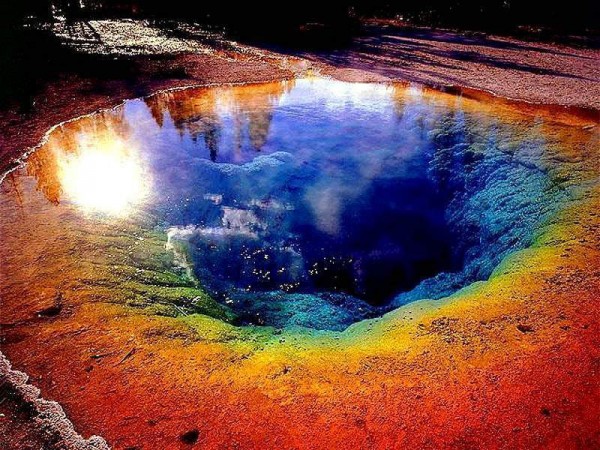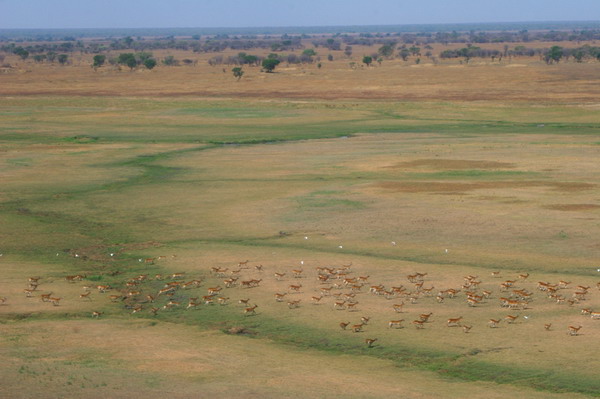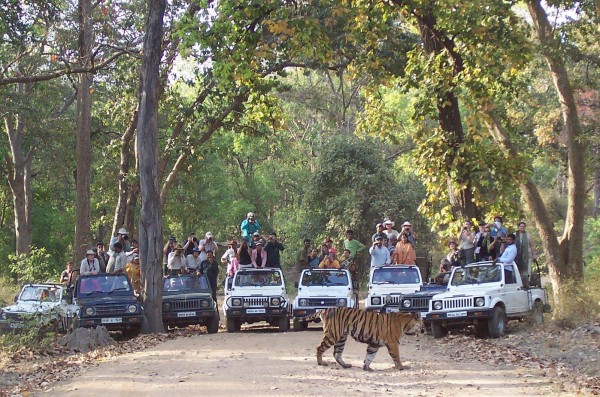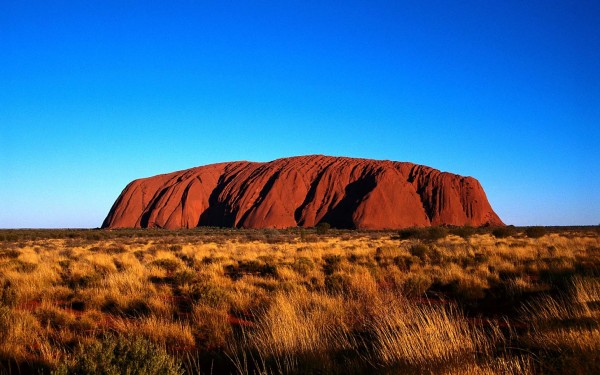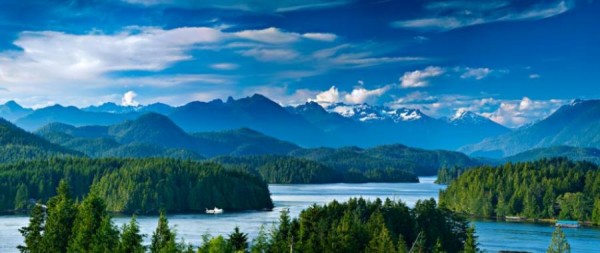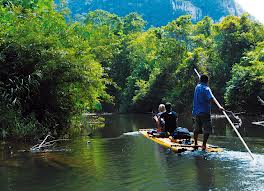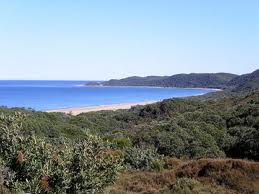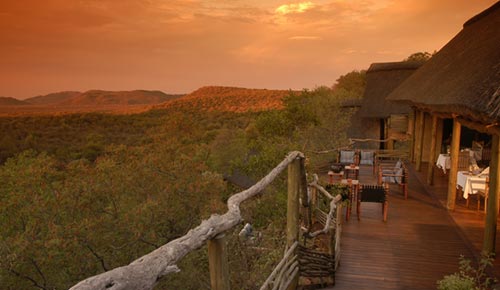When it comes to holidays, some people like visiting cities, historical monuments or lying on beaches. But if none of those tickle your fancy, how about a holiday to a wildlife reserve? All around the world, special areas are preserved where you can see animals and plants in their natural habitat – undisturbed by urbanization, and protected from any future building works. There are huge variations in the types of wildlife reserves you can visit, from the Arctic to the Equator and it’s hard to narrow it down to just ten. But we’ve picked out some of the best in our Top 10 Wildlife Reserves.
10. Yellowstone National Park
Famous for its geothermal features – and for being parodied in Yogi Bear – this park is also home to a number of different varieties of animal. Grizzly bears roam the mountains and they’re a tad less friendly than Yogi, although the official website claims that your chances of being eaten by a bear are 1 in 2.1 million. Apparently, only 7 people have died at the paws of bears in the last 140, so you’re more likely to drown, or die of burns from the thermal pools. Provided you pick your way through unscathed, as the vast majority of visitors do, you can also see herds of bison, elks and wolves as well as the unique system of geysers and thermal pools that the park is so famous for.
9. Kafue National Park
Covering an impressive 22,400km2, Kafue National Park in Zambia is one of Africa’s biggest and parts of it are still unexplored. It was established as a National Park in 1924 by the British Colonial Government, by moving the Nkoya people off the land and turning it into a tourist attraction. There are now calls for compensation to the Nkoya, but at the time it was standard practice for the colonists to assume control of land and do with it what they wanted.
The park is full of different types of wildlife, and claims to be one of the best places to see leopards. But you’ll also find elephants, hippos, crocodiles and African wild dogs in the Kafue, along with the elusive cheetah. Some species are now under special protection, following a spate of poaching, and authorities are working to conserve their populations.
8. Bialowieza National Park
There aren’t many huge wildlife reserves in Europe, given how densely populated it is compared to other continents. But this area on the border of Belarus and Poland is almost untouched, with dense forests providing homes to elks, bison, deer and wild boar, as well as a bison-cow hybrid known locally as a żubroń. Walking through the forest, you can almost imagine how Europe was in the prehistoric times and because of this it’s been designated a UNESCO World Heritage Site. There is little in the way of “civilization” in the forest, although the Tsar had a hunting mansion (Palace Park) in Białowieża, which is worth visiting. A great destination for anyone really hoping to get away from it all, although parts of the reserve are guided-tour only. Check before you wander too far!
7. Bandhavgarh National Park
Known as the Tiger-spotting Capital of Asia, this 446km2 National Park in India also has a large population of breeding leopards and some deer. It’s split into four zones – Tala, Magdhi, Khitauli, and Panpatt – and Tala is said to be the hotspot for tiger-spotting, as they wander across the roads seemingly oblivious to the hordes of tourists photographing them! However, the Alpha Male of the park, Bamera, has territory in all four zones, so might appear in any one of them. Bamera is the son of legendary tiger B2, and it is likely that he killed his father in a slightly Oedipal display of supremacy. You too can witness tiger-on-tiger rivalry close up at the Bandhavgarh National Park!
6. Uluru-Kata Tjuta National Park
This National Park, situated in the barren center of Australia, is most famous for the large red rock that gives the park its name – Uluru, also known as Ayres Rock. It’s a site of great mystical significance to the indigenous Australian population, and so the surrounding area has been preserved as a wildlife reserve.
While visiting Uluru, you can see a surprising number of creatures who survive in the gaspingly dry heat – including mammals such as bats and moles, although these are rarely spotted during the day. A more common sight are cold-blooded reptiles, like the thorny devil – a lizard that is native only to Central Australia. There are also 13 species of snake and even a type of frog that buries itself in the sand, rather than taking up a more traditional frog position near a pond. On top of that, there are beautiful and unusual birds to see. So, not only is it a great cultural site, it’s also full of life!
5. Vancouver Island
A settlement built on top of an undersea mountain range, Canada’s Vancouver Island sits off the west coast of the mainland, and stretches for 460km. It’s famous for whale-watching, and pods of Orcas visit the area regularly, with tour guides almost guaranteeing you’ll see one on your trip out. But Orcas aren’t the only wildlife – there is also the chance to swim with salmon or go on the hunt for grizzly bears (not in a literal sense, just to track them down and photograph them). It’s very much a working community, with fishing and logging the primary industries, but it is tourist-friendly and hosts a number of festivals throughout the year, like the Pacific Rim Whale Festival, which are well worth visiting.
4. Khao Sok National Park
There are many beautiful areas in our list so far, but Khao Sok in Thailand may be a contender for most beautiful. With mountains, lakes and rainforest, the landscape is ever-changing, and it’s a great place to observe some of the local wildlife. You can go trekking on elephants, canoeing or on jeep safari and the wildlife is hugely varied. There are leopards, tigers and gibbons as well as elephants and, if you’re unlucky, you may even have a close encounter with a cobra! The website says that “Lethal bites are very rare” and that only 10-20 people die in the country from snake bites a year. Still, it’s worth looking up their information on snake bites before you go. Venomous potential aside, it’s a truly stunning nature reserve with some very exciting wildlife to spot.
3. Croajingolong National Park
Another Australian entry, but a complete contrast to arid Uluru. Located in Victoria, the “garden state” of Australia, this is a lush, green area of 875km2 and home to the typical Australian animals, such as kangaroos and koalas. Its lushness comes partly from its location right next to water, with the Pacific on the south side and the Bemm River on the west. It is a UNESCO World Biosphere Reserve and is officially owned by the Aboriginal people, as they were settled on the land long before anyone else claimed it. It’s fairly developed though, with campsites, picnic areas and even lighthouses along the coastline and is very much a tourist attraction as well as an Aborigine reserve. Watersports, such as boating and canoeing are available and it’s a great place to sit and admire the view as well as spotting some wildlife hopping through.
2. Madikwe Game Reserve
So far, you may have noticed the absence of the words “Big 5”, a commonly used safari term to describe the animals that most tourists want to see – lion, elephant, buffalo, leopard and rhino. These animals are often the main goal of safari goers, a tradition that stretches down from the big-game hunters (these 5 are the most difficult to kill on foot). The reason they’ve been absent so far is that many reserves insist it’s not about ticking off boxes, it’s about biodiversity and seeing a whole range of animals. This South African resort, however, is proud of being a “big 5” reserve, and keen tourists should be able to tick those boxes off, along with 61 other mammal species and 300 birds, all over 750km2. It’s an impressive reserve and a key destination if you’re serious about safari. And especially if you want those 5 animals to be ticked off your list!
1. Amazon Rainforest
But for real, untamed wildlife there is nowhere in the world quite like the Amazon rainforest. Teaming with all kinds of deadly creatures, from anacondas to tree frogs, it’s a unique experience and a true taste of what the world was like before man intervened. With an area of 7,000,000km2 it’s on a different scale to the rest of the reserves, and is home to hundreds of species that simply don’t exist anywhere else.
It’s not friendly, it’s not tame and you may not find a lot of fast-food outlets about the place but for anyone who’s passionate about seeing creatures in their natural habitat, it’s the trip of a lifetime. Be prepared to be hot, sweaty and scratched by the dense vegetation…but also overwhelmed by the wonder of the wildest place on Earth.

